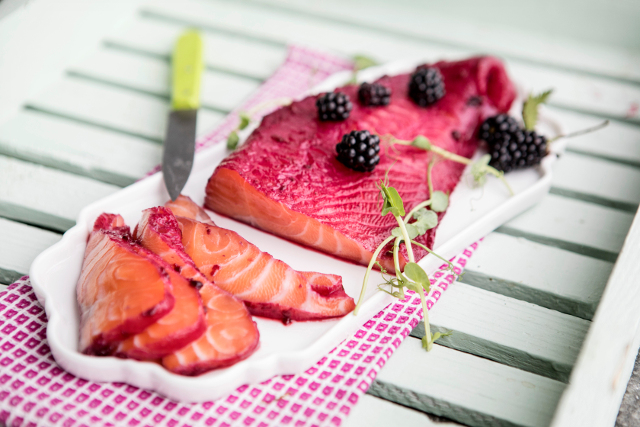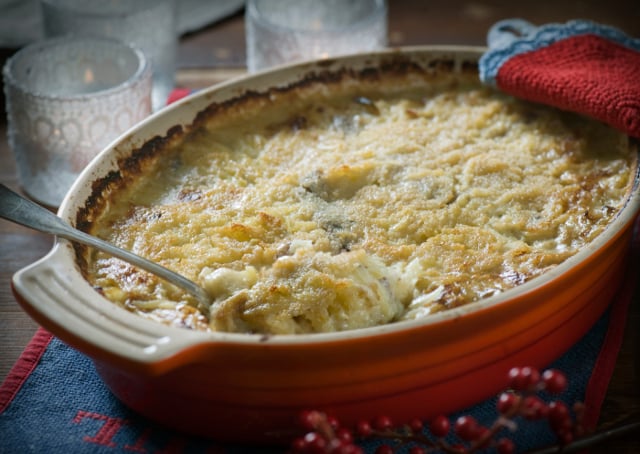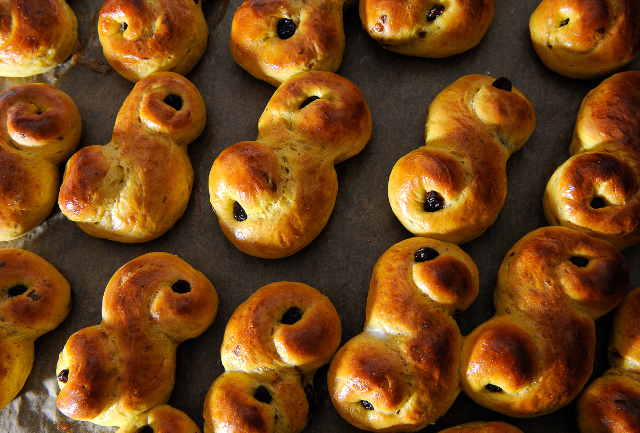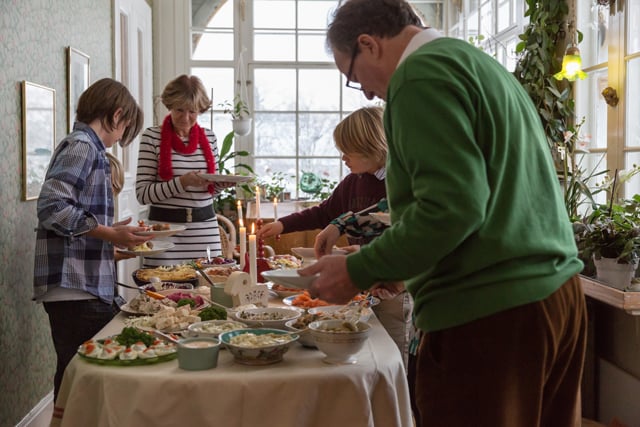1. Gravad Lax
Raw fish might not seem Christmassy, but this salmon dish is a favourite in Sweden. The name literally means 'cured fish' and the recipe dates back from the Middle Ages, when fishermen buried their fish in order to preserve it. Gravad lax is probably Sweden's most famous culinary export, enjoyed all year round but especially during the Christmas season. The good news is it's simple to make at home.
Click here for the full recipe.

Another kind of gravad lax, with blackberries. Photo: Christine Olsson/TT
2. Potato and fish gratin (Janssons frestelse)
Janssons frestelse translates to Jansson's Temptation, and though Swedes don't know for certain who exactly Jansson was, it's easy to see why he couldn't resist this hearty casserole. Made with potatoes, onions and cream, it has secured its place as a staple on most Swedes' julbord (Christmas buffet tables). Serve it piping hot, with bread, and you've got the ultimate Swedish comfort food.
Click here for the full recipe.

Jansson's Temptation. Photo: Malin Hoelstad/SvD/TT
A delicious accompaniment to glögg (see below), tea or coffee, the Swedish version of gingersnaps is thinner and crispier than variants in other countries, which helps it make a satisfying 'snap' sound when you break it apart. Our recipe will help you make around 150 of these sweet biscuits so you can give some as gifts to friends and family and still be left with a generous supply for yourself. You can cut them into festive shapes, decorate them with icing, or – if you can resist the temptation to eat them – hang them up as decorations.
Click here for the full recipe.

Gingerbread cookies. Photo: Gorm Kallestad/NTB/Scanpix
Also known as Lucia buns, these golden pastries are particularly celebrated on Saint Lucia Day (December 13th) but are also enjoyed throughout the festive season. Lucia comes from the word for 'light' and the Italian saint is seen as a symbol of hope in the dark winter. We think the same can be said for these buns. Made with saffron and raisins and usually rolled into a spiral 'S' shape, they make a delicious choice for a December 'fika' (coffee and cake break).
Click here for the full recipe.

Lussekatter. Photo: Anders Wiklund/Scanpix
After all that hearty food you'll need something to wash it down, and what better drink than Sweden's take on mulled wine? It's fun to say, it's fun to drink, and it's fun to make, so curl up with a mug of the spice-infused drink this holiday. Here's our favourite recipe to start you off, but once you've got the hang of it, the amounts and kinds of spices can be adjusted to suit your tastes.
Click here for the full recipe.

Glögg. Photo: Vilhelm Stokstad/TT
Article first published in 2015.



 Please whitelist us to continue reading.
Please whitelist us to continue reading.